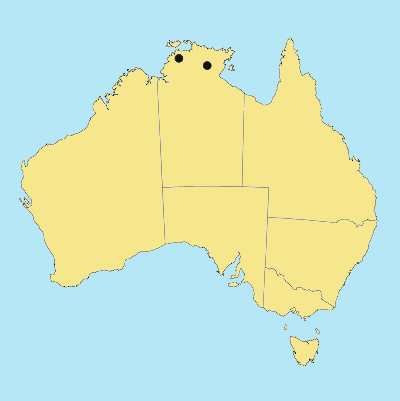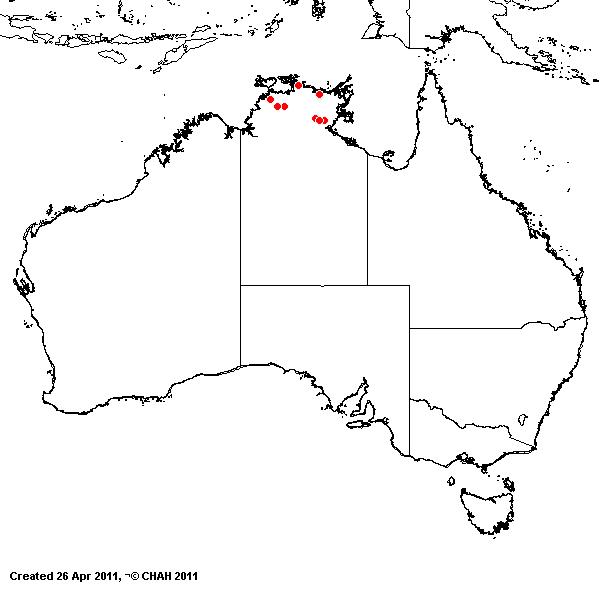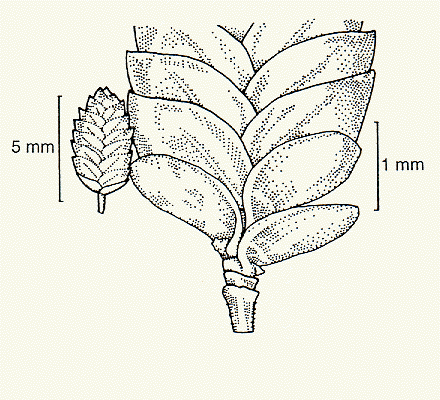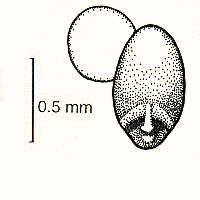Eragrostis ecarinata M. Lazarides.
Austral. Syst.
Bot. 10: 114
(1997).
Classification. (GPWG 2001) : Subfamily
Chloridoideae. Cynodonteae.
Type of Basionym or
Protologue Information: Australia,
Northern Territory,
Mainoru homestead: Latz 2732
(CANB holo, BRI, DNA).
Key references
(books and floras): [2002] D.Sharp & B.K.Simon, AusGrass, Grasses of
Australia.
Illustrations:
[2005] K.Mallet (ed.), Flora of Australia 44B: Poaceae 3
(Fig. 65N-O).
Habit.
Perennial. Culms erect, 60–92 cm tall, 4–6 -noded. Leaf-sheaths scaberulous.
Ligule a fringe of hairs, 0.1–0.3 mm long. Leaf-blades curled, flat, 12–25 cm
long, 2.5–4 mm wide. Leaf-blade surface indumented.
Inflorescence.
Inflorescence compound, a panicle. Panicle linear, 9–22 cm long, 1 cm wide.
Spikelets.
Spikelets pedicelled. Fertile spikelets many flowered, with at least 2 fertile
florets (15–22), comprising 15–22 fertile floret(s), with diminished florets at
the apex, oblong or ovate, laterally compressed, 6.5–9 mm long.
Glumes. Glumes
similar. Lower glume linear or ovate, cartilaginous, keeled, 1-keeled, 1(–5)
-nerved. Upper glume linear or ovate, 1.1–2.5 mm long, cartilaginous, keeled,
1-keeled, 1(–5) -nerved.
Florets.
Fertile lemma 2 mm long, keeled, 3 -nerved. Lemma apex muticous. Palea 2 -nerved. Anthers 3. Grain 0.6–0.7 mm
long.
Continental
Distribution: Australasia.
Australian
Distribution: Northern Territory.
Northern Territory: Darwin &
Gulf.
Notes.
Distinguishing features include inflated tightly imbricate florets falling
entire with rachilla internode; thickened rachilla; orbicular, pouched paleas
with much-reduced keels and flaps; biconvex caryopsis and spiciform panicle.
The reduced keels and their auricle-like flaps are unique features in
Australian species and possibly within the genus.
Endemic;
only occurs in N.T. N of Mainoru HS and on Mt. Bundy Stn, SE of Darwin. Heavy
clays in seasonal swamps.; flowers June-July; fruits June-July.




